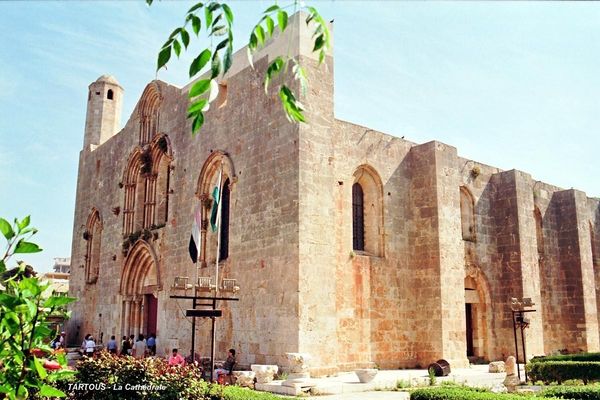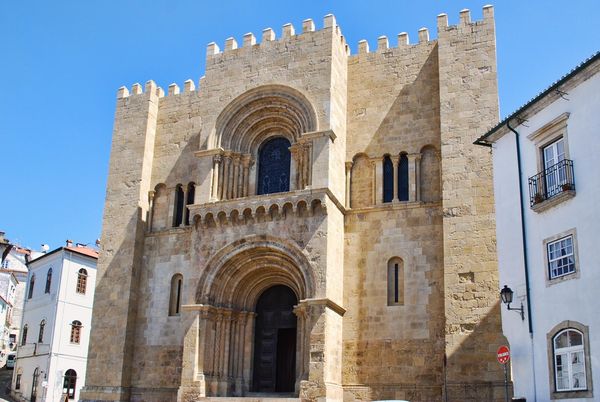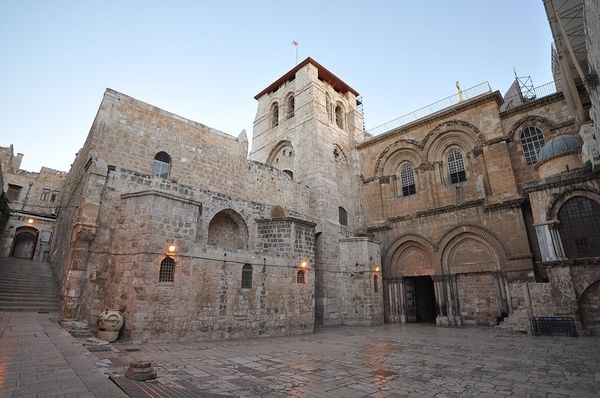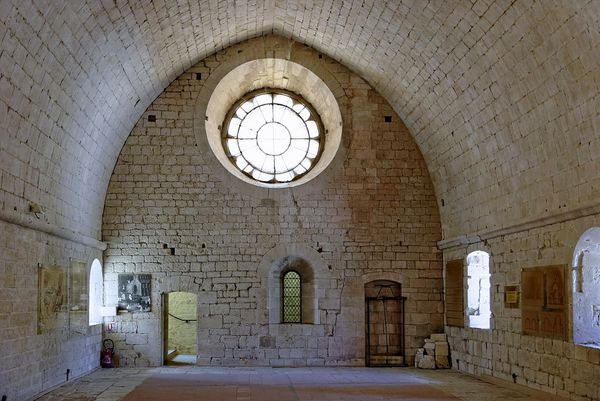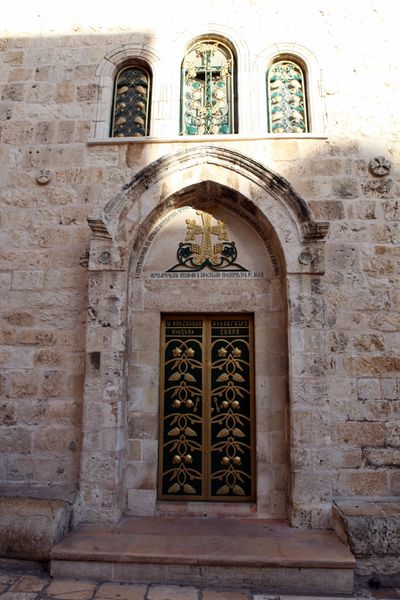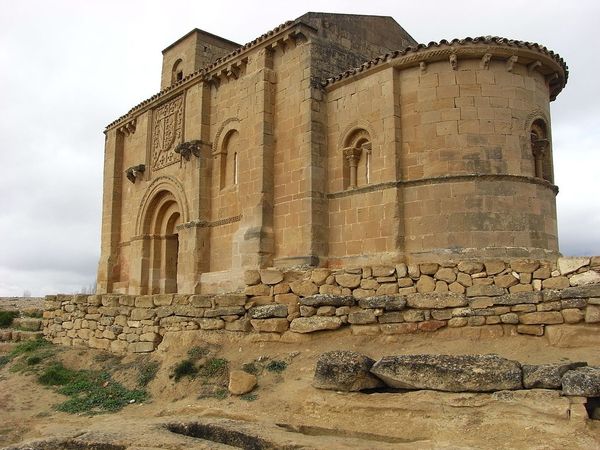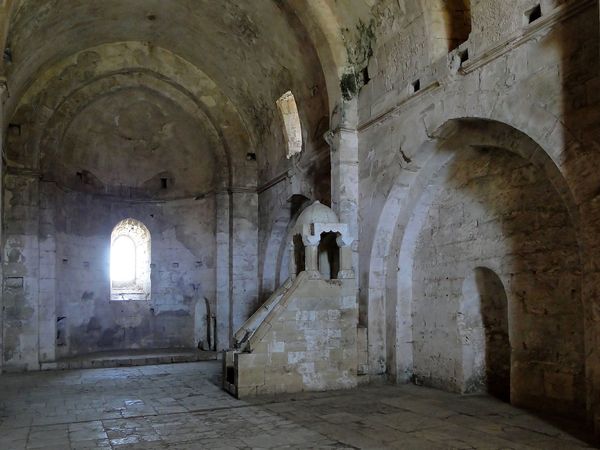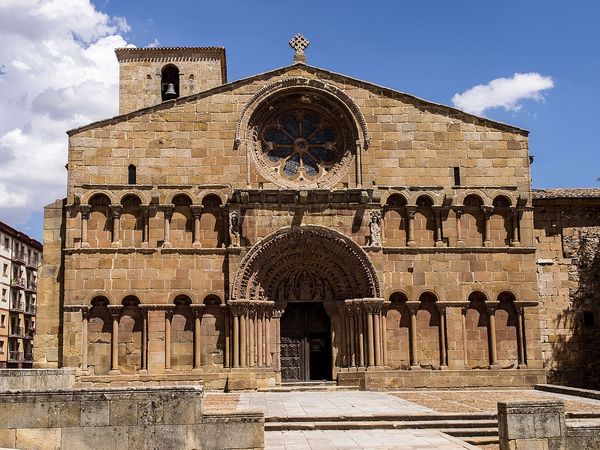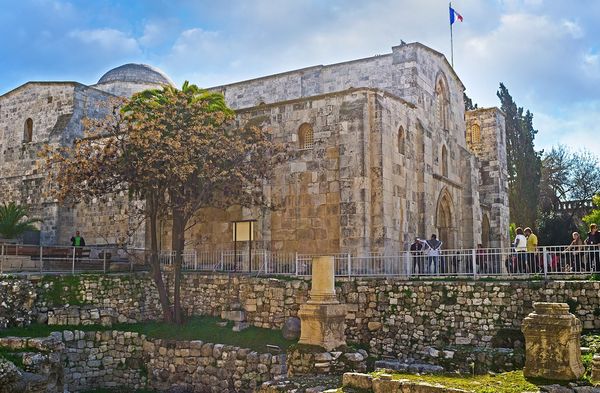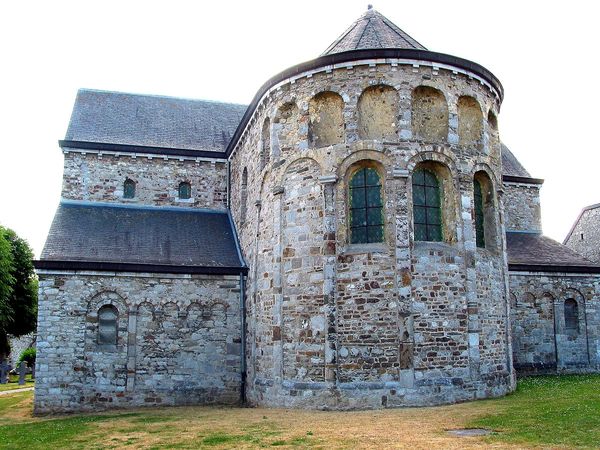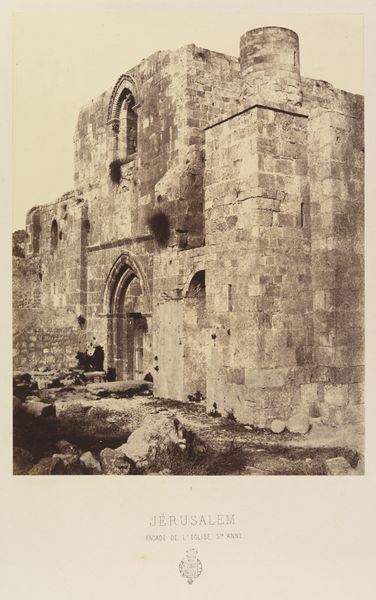
architecture
#
holy-places
#
arch
#
architecture
Copyright: Public domain
Curator: Let’s take a look at this impressive image of the Cathedral of Our Lady of Tortosa, dating back to around 1150. Editor: It strikes me immediately with its weathered beauty. The stone looks ancient, worn smooth by centuries of sun and wind. There's a raw, almost brutal honesty in the architecture itself. Curator: Precisely. Its Romanesque architecture speaks volumes about the period. Tortosa, now Tartus in Syria, was a significant Crusader city. Construction began by the Knights Templar. This architectural style, with its thick walls, small windows, and rounded arches, reflects that tumultuous history. It emphasizes fortification as much as faith, you see. Editor: Yes, I do. But beyond its physical appearance, I wonder about the hands that built it and the community that prayed within those walls. The arches above the windows remind me of how this form has evolved, a direct architectural link from antiquity through these European-influenced crusader states. Did local masons collaborate, blending techniques and cultural sensibilities, or was this a strictly imposed European style? Curator: That's the crux of the issue, isn't it? The interplay of cultures is so fascinating here. We have what on the surface seems like standard Romanesque, but consider the socio-political situation, the ongoing religious tensions. We can start by contextualizing the art in a frame of war, control, and religious domination of holy sites, all expressed in this imposing stone structure. It has become this interesting case study on what gets built. Editor: It really brings up the idea of cultural hybridity versus imposition. This cathedral stands not just as a place of worship but also as a silent witness to centuries of conflict and negotiation between the invading powers of Western Europe and the diverse communities of the Eastern Mediterranean. And while the historical forces do have some sort of resolution, it also begs the question: what purpose does art hold during such conflict and turmoil? Curator: Indeed, it's a constant negotiation between aesthetics, functionality, and political messaging. The power structures are built into the stone. The imposing nature of the architecture shows how holy space was controlled. Editor: I think reflecting on such questions provides vital ground for conversations on conflict, place-making, and artistic agency in areas that continue to face colonial and neocolonial realities. It makes art that much more real, you know. Curator: I completely agree. Considering it from the multiple layers gives an accurate sense of context, I think.
Comments
No comments
Be the first to comment and join the conversation on the ultimate creative platform.
